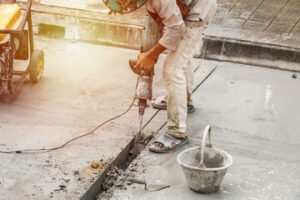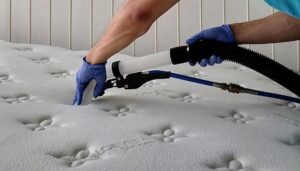Homeownership comes with a lot of responsibility, including tending to necessary maintenance tasks. Otherwise, clogged drains may turn into water damage, and chipped paint may lead to wood rot.

But while some chores are fine for enthusiastic amateurs, there are certain repairs that require the expertise of a professional. Failing to do so could lead to additional damage, more expensive repairs, or severe injuries to the homeowner. Keep reading the article below to learn more about Professional Home Repair.
When it comes to home improvement, there are many different routes homeowners can take. Some opt for major repairs, while others choose to undertake more extensive renovations. While both options can increase the value and appearance of a home, there are some important differences between the two that can impact the outcome of a project. Understanding these differences can help homeowners decide which route to take and make informed decisions about the work that needs to be done.
Repairs primarily focus on fixing and restoring existing components or features to their original functionality. Examples include unclogging drains, repairing damaged windows, or replacing broken electrical outlets. These repairs are necessary to keep a home in good condition and prevent problems from escalating into serious issues that could cause safety hazards.
In contrast, renovations are alterations to a property that increase its value, adapt it for a new use, or extend its life. For example, a major renovation might involve installing new energy-efficient windows or remodeling the kitchen or bathroom. These improvements can significantly increase a home’s value and lifespan, making them a wise investment for any homeowner.
It’s also crucial for landlords to understand the difference between repairs and renovations when it comes to tax implications. Repairs and maintenance expenses are deductible in the year they’re incurred, while capital improvements must be depreciated over an extended period of time. Keeping these distinctions in mind can help owners plan their budgets and weigh the ROI of potential projects.
Rental properties require regular upkeep to ensure they’re safe and livable for tenants. While some maintenance can be handled by a tenant, other tasks are best left to professionals. Understanding the difference between repairs and renovations can help landlords prioritize their spending and allocate resources effectively.
In addition, understanding the difference between repairs and renovations can help rental property owners make the most of their tax deductions. For instance, while a repair may be necessary to keep the property in good condition, a renovation is likely needed to attract and retain tenants. In this case, the expense is a legitimate tax deduction in the year it’s incurred, but must be depreciated over a 27.5-year period.
Preparation Is Key
Whether it’s fixing a leaky faucet or repainting your living room, the feeling of accomplishment that comes with completing a home repair project is unmatched. Home repair can also teach important life lessons, such as perseverance and resilience. And it can provide practical skills that may be useful in future employment, such as troubleshooting and problem solving.
In addition to the satisfaction of tackling a task you’ve always wanted to do, home repairs can save you money in the long run. Promptly addressing small issues can prevent them from escalating into more costly problems. Keeping up with routine maintenance can also help your home retain its market value when you’re ready to sell.
A well-maintained home is also a safer place to live. Faulty systems can create dangerous conditions that increase the risk of accidents and injuries, especially for children and older adults. Home repair can prevent these hazards by ensuring your home’s mechanical systems are in good working condition.
Home repair is an essential component of a healthy home, but many households do not have the resources to meet these needs. A variety of factors, including persistent funding and capacity challenges, contribute to these barriers. Home repair programs vary widely in their eligibility criteria, service delivery models and scope of work. Some focus on a particular need, such as energy efficiency, accessibility or disaster damage. Others target specific populations, such as low-income households or veterans.
Many of these programs have long waitlists and turn eligible households away due to limited funds. The COVID-19 pandemic has exacerbated this issue, as more households have sought assistance to address the immediate and ongoing health and safety risks in their homes.
In addition, home repair can be complex and require specialized equipment. If you don’t have the right tools or materials, a DIY job can quickly become more expensive than it needs to be. Conducting thorough research on the tools and materials needed can help you avoid overpaying or purchasing the wrong products. An experienced handyman can also assist you in identifying the most cost-effective options for materials and equipment.
Don’t Forget the Cleanup
After completing any home repair project, it is important to clean up. This will prevent future damage caused by dust, dirt or other debris. In addition, it will ensure that your finished product looks professional and clean.
With the popularity of home renovation TV shows, it can be tempting for even not-so-handy homeowners to pick up a hammer and give home repair a try. However, there are some tasks that are better left to the professionals. Failing to leave certain projects to the experts could result in costly consequences, including your house not being up to code or serious injuries.
Of course, there are also many home repairs that can be completed quickly and easily. This is especially true when it comes to basic maintenance tasks that are often neglected, such as cleaning baseboards or painting them. These simple tasks can make a big difference in the way your home looks and will show potential buyers that you have cared for the property. In a competitive market, this can be the difference between your home getting an offer or sitting on the market for months.
Double-Check Your Work
Taking on home repairs yourself can be an effective way to save money and channel your inner design diva, but there are a few projects that are best left to the professionals. Faulty work could result in costly repairs, not to mention safety concerns for you and your family.
The pride of homeownership is a wonderful thing, but it also comes with an insurmountable list of maintenance tasks. For those on fixed or low incomes, it can be difficult to afford these essential costs and keep their homes in livable condition. Home repair programs can help.
Many of these programs are run by local community organizations, like Habitat for Humanity or Rebuilding Together, and federally funded by the Department of Housing and Urban Development and other agencies. These programs have a significant impact on socioeconomic mobility and financial stability.
Whether you’re rolling up your sleeves and going it yourself or calling in the pros, remember that doing your research and being prepared will save you money in the long run. Double-checking your work and having the right tools at hand will ensure that your project is a success and you’re not left with lingering repairs or headaches to deal with. Ready to get started on your next home improvement project? Apply for a personal loan today and get an instant decision without impacting your credit score.




